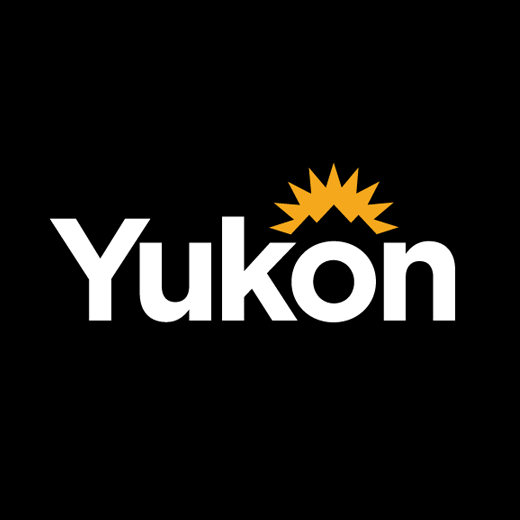mining-recorder
Type of resources
Topics
Keywords
Contact for the resource
Provided by
Formats
Representation types
Update frequencies
status
-

The Yukon Geological Survey (YGS) has compiled over 195 surficial geology maps into a standardized GIS format, providing approximately 80% coverage of the territory. The maps range in scales from 1:250,000 to 1:10,000 with spatial overlap between scales. The original maps were produced by various agencies, including the Geological Survey of Canada, YGS, Yukon Government, universities, and the City of Whitehorse. All original feature descriptions have been preserved and also converted to standardized values using the Yukon terrain classification system. The compilation includes 4 GIS datasets and supporting documents available for download via [YGS integrated data system](https://data.geology.gov.yk.ca/Compilation/33) (YGSIDS) or GeoYukon. A .lyr file is [provided](https://data.geology.gov.yk.ca/Compilation/33) to symbolize feature classes and differentiate overlapping maps at different scales. Additionally, there is a surficial geology map index. The polygon attributes captured include surficial material, texture, age, surface expression, and geomorphological processes. Line features include geological contacts, glacial limits, glacial landforms (cirques, arêtes, eskers, meltwater channels, moraines), and non-glacial landforms (faults, lineaments, landslides, escarpments). Point features include field station, fossil and sample locations, glacial landforms (erratics, kames, kettles, drumlins, flutings), permafrost features (pingos, palsas, patterned ground, thermokarst depressions), and other non-glacial landforms (landslides, tors). The map index provides information on each map publication such as author, map title, map scale, publisher. These data are valuable for land-use applications in the territory, including: mineral and placer exploration, geotechnical engineering, infrastructure planning, granular resource assessments, permafrost modeling, agricultural assessments, forest management, and biophysical or ecological land classification. Distributed from [GeoYukon](https://yukon.ca/geoyukon) by the [Government of Yukon](https://yukon.ca/maps) . Discover more digital map data and interactive maps from Yukon's digital map data collection. For more information: [geomatics.help@yukon.ca](mailto:geomatics.help@yukon.ca)
-

The Yukon Mining Assessment Report Footprints database contains over 7,500 reports documenting mineral exploration activity in Yukon since the 1950s. The majority fo these records are open to the public, more recent reports are confidential. Each record in this database represents a report, with the polygon geometry representing the area where work was performed. Key information about these reports has been captured, such as report number, title, author, year, claims, property name, expenditures, as well as a hyperlink to the scanned report, and it"s associated data. The intended audience for this dataset is mining companies, prospectors, land use planners, First Nations, regulators, Yukon Environmental and Socio-Economic Assessment Board, Yukon Geological Survey, and Yukon Government. Distributed from [GeoYukon](https://yukon.ca/geoyukon) by the [Government of Yukon](https://yukon.ca/maps) . Discover more digital map data and interactive maps from Yukon"s digital map data collection. For more information: [geomatics.help@yukon.ca](mailto:geomatics.help@yukon.ca)
-

Mining District Boundaries for the Yukon as defined by the Yukon Placer Mining Act. The Yukon is divided into four districts with a mining recorder's office in each. Distributed from [GeoYukon](https://yukon.ca/geoyukon) by the [Government of Yukon](https://yukon.ca/maps) . Discover more digital map data and interactive maps from Yukon's digital map data collection. For more information: [geomatics.help@yukon.ca](mailto:geomatics.help@yukon.ca)
-

The Yukon Geological Survey (YGS) has compiled over 195 surficial geology maps into a standardized GIS format, providing approximately 80% coverage of the territory. The maps range in scales from 1:250,000 to 1:10,000 with spatial overlap between scales. The original maps were produced by various agencies, including the Geological Survey of Canada, YGS, Yukon Government, universities, and the City of Whitehorse. All original feature descriptions have been preserved and also converted to standardized values using the Yukon terrain classification system. The compilation includes 4 GIS datasets and supporting documents available for download via [YGS integrated data system](https://data.geology.gov.yk.ca/Compilation/33) (YGSIDS) or GeoYukon. A .lyr file is [provided](https://data.geology.gov.yk.ca/Compilation/33) to symbolize feature classes and differentiate overlapping maps at different scales. Additionally, there is a surficial geology map index. The polygon attributes captured include surficial material, texture, age, surface expression, and geomorphological processes. Line features include geological contacts, glacial limits, glacial landforms (cirques, arêtes, eskers, meltwater channels, moraines), and non-glacial landforms (faults, lineaments, landslides, escarpments). Point features include field station, fossil and sample locations, glacial landforms (erratics, kames, kettles, drumlins, flutings), permafrost features (pingos, palsas, patterned ground, thermokarst depressions), and other non-glacial landforms (landslides, tors). The map index provides information on each map publication such as author, map title, map scale, publisher. These data are valuable for land-use applications in the territory, including: mineral and placer exploration, geotechnical engineering, infrastructure planning, granular resource assessments, permafrost modeling, agricultural assessments, forest management, and biophysical or ecological land classification. Distributed from [GeoYukon](https://yukon.ca/geoyukon) by the [Government of Yukon](https://yukon.ca/maps) . Discover more digital map data and interactive maps from Yukon's digital map data collection. For more information: [geomatics.help@yukon.ca](mailto:geomatics.help@yukon.ca)
-

Mining District Boundaries for the Yukon as defined by the Yukon Placer Mining Act. The Yukon is divided into four districts with a mining recorder's office in each. Distributed from [GeoYukon](https://yukon.ca/geoyukon) by the [Government of Yukon](https://yukon.ca/maps) . Discover more digital map data and interactive maps from Yukon's digital map data collection. For more information: [geomatics.help@yukon.ca](mailto:geomatics.help@yukon.ca)
 Arctic SDI catalogue
Arctic SDI catalogue